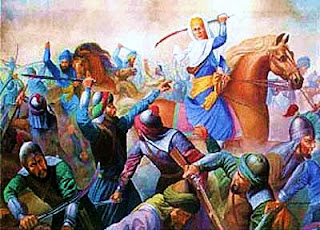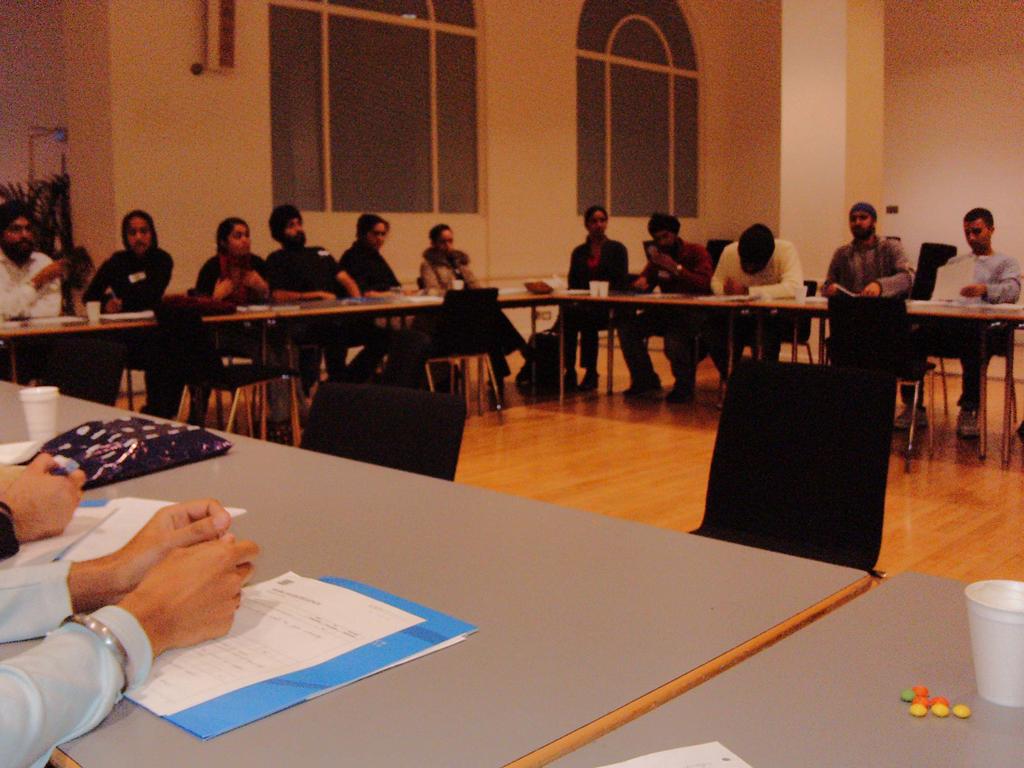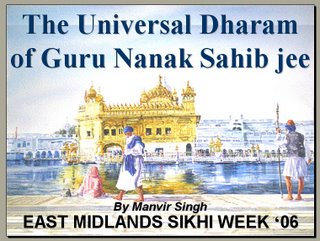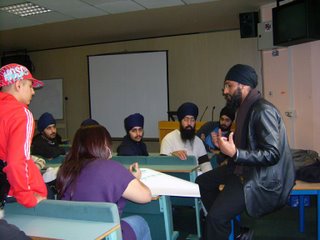Yesterday I attended my local RE Centre inter-faith public meeting which is a series of talks from different speakers from the local community representing the different faiths (i.e. Christian, Muslim, Buddhist and Sikh). It's nice to attend because everyone there is very friendly, and the environment is peaceful and welcoming.
I met a very old Christian gentleman who said that this was the first time he had spoken to a Sikh person. He was a very nice person and I enjoyed talking to him. Then I met a man who was a Catholic and said he was the carpenter who had built a Gurdwara in Cardiff, Wales. He was impressed by the hospitality and pyaar of the Sangat at the Gurdwara and said he enjoyed Langar and what it meant.
I met a very old Christian gentleman who said that this was the first time he had spoken to a Sikh person. He was a very nice person and I enjoyed talking to him. Then I met a man who was a Catholic and said he was the carpenter who had built a Gurdwara in Cardiff, Wales. He was impressed by the hospitality and pyaar of the Sangat at the Gurdwara and said he enjoyed Langar and what it meant.
 Yesterday's topic was "COMMUNITY". The speakers were from Buddhism and Christianity. The Buddhist lady talked about the "SANGHA" (Pali word for 'Community'). The Sangha or Sangat is one of the three 'jewels' of Buddhism. The Sangha is not everyone or anyone but the company of monks and nuns from whom the wider community or the lay people get inspiration, guidance and strength from. This made me of think of Gurbani telling us to have the Sangat of Gurmukhs.
Yesterday's topic was "COMMUNITY". The speakers were from Buddhism and Christianity. The Buddhist lady talked about the "SANGHA" (Pali word for 'Community'). The Sangha or Sangat is one of the three 'jewels' of Buddhism. The Sangha is not everyone or anyone but the company of monks and nuns from whom the wider community or the lay people get inspiration, guidance and strength from. This made me of think of Gurbani telling us to have the Sangat of Gurmukhs.ਸਾਧਸੰਗੁ ਜਿਨ ਪਾਇਆ ਸੇਈ ਵਡਭਾਗੇ ॥
saaDhsang jin paa-i-aa say-ee vadbhaagay.
Those who attain the Saadh Sangat, the Company of the Holy, are very fortunate.
(Ang 322)
When the Christian spoke about community he spoke about his own personal community. He lived in a communal residence with a group of Christian families. They all have jobs ranging from university lecturers to farmers who live together, put their money in a shared place and they eat and pray together. Living in such a communal and shared environment he said that one learns from one another to forgive one another, overlook others shortcomings, and that things unachievable alone become achievable as a group of people. The expression of peace, humility and love the Christian showed was nice to look at. It reminded me of the feeling that I experience at Gurmat Camps like Sikhi Camp and Khalsa Camp in the summer. You get feeling of Chardi Kalaa in Sangat.
At the end I shared with the public Gurmat's view of Sangat - good and bad.
Good Sangat is compared to the Sandalwood tree which shares its virtues and beautiful fragrance on others around it irrespective of their shape, form or nature, for example even the Castor oil plant begins smelling of Sandalwood when planted nearby:
Good Sangat is compared to the Sandalwood tree which shares its virtues and beautiful fragrance on others around it irrespective of their shape, form or nature, for example even the Castor oil plant begins smelling of Sandalwood when planted nearby:
ਚੰਦਨ ਕੈ ਸੰਗਿ ਤਰਵਰੁ ਬਿਗਰਿਓ ॥
chandan kai sang tarvar bigri-o.
Associating with the sandalwood tree, the tree nearby is changed;
ਸੋ ਤਰਵਰੁ ਚੰਦਨੁ ਹੋਇ ਨਿਬਰਿਓ ॥੨॥
so tarvar chandan ho-ay nibri-o. ||2||
that tree begins to smell just like the sandalwood tree. ||2||
(Ang 1158)
Bad Sangat is compared to a Banana tree planted next to a thorn bush:
ਕਬੀਰ ਮਾਰੀ ਮਰਉ ਕੁਸੰਗ ਕੀ ਕੇਲੇ ਨਿਕਟਿ ਜੁ ਬੇਰਿ ॥
kabeer maaree mar-o kusang kee kele nikatt jo ber.
O Kabeer! Never have company with those broken from Vaheguru. I have been ruined and destroyed by bad company, like the banana plant near the thorn bush.
ਉਹ ਝੂਲੈ ਉਹ ਚੀਰੀਐ ਸਾਕਤ ਸੰਗੁ ਨ ਹੇਰਿ ॥੮੮॥
ouh jhoolai ouh cheeree-ai saakat sang na her. ||88||
If a thorn bush grows near a banana plant, the thorn bush will wave in the wind, and pierces the banana plant (with it's thorns); Similarly (O Kabeer!) sitting in a negative environment under the affect of corruption and sin your soul will die at the hands of spiritual death. ||88||
(Ang 1369)
The topic for next month at the Inter-faith meeting is "CHARITY& POVERTY." The main speakers will be sharing their views about the subject from Sikhi and Islam.











































